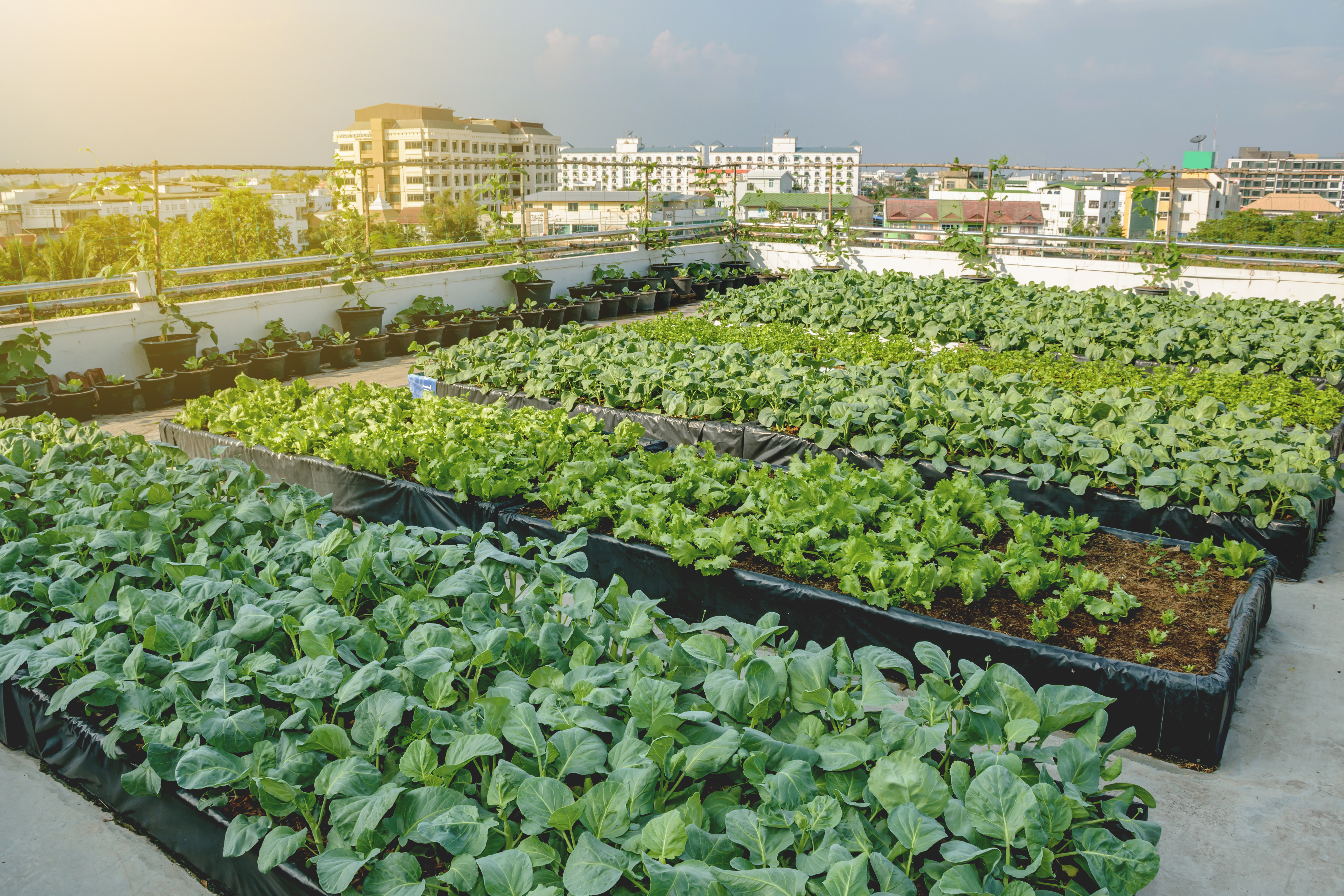HOW CAN URBAN AGRICULTURE HELP US ACHIEVE NET ZERO?
Food production and supply accounts for between 20-30% of greenhouse gas emissions in the UK, and, as a result, is a key area for decarbonisation. The food sector poses unique challenges as decarbonisation must be carefully balanced with maintaining affordable prices and reliable supply chains to ensure food security for all.
The National Farmers’ Union has set out plans for British agriculture to be carbon neutral by 2040, in line with the government’s plans for net zero by 2050.
Urban agriculture will play an important role in the decarbonisation of food production and supply in the UK. Urban agriculture includes rooftop gardens, rooftop greenhouses, indoor farms, vertical farming, aquaponics and more.
The potential environmental benefits of urban agriculture are complex and require thorough evaluation. The benefit of reducing food miles is quickly erased if urban agriculture requires greenhouses or vertical farms to be heated or powered using fossil fuels. This is why at District Eating we promote the use of waste heat and CO2 from industry, and innovative renewable energy solutions. With careful planning and a strong focus on carbon accounting and lifecycle assessment, urban agriculture can help us achieve net zero.

Space efficiency is important in urban areas where land and buildings are expensive, and availability can be constrained. Making use of vertical growing and integrating farms into existing buildings in innovative ways can result in higher yields on a kilogram per square meter basis and improve financial viability – the vital ingredient for project success and resulting food security and carbon savings. One study found that a 51 square kilometre area of Seoul, Korea being converted into an urban farm could save approximately 11.67 million kg of CO2 per year, the equivalent of a 20 km2mature pine forest!2 This results in energy savings because a smaller growing area means less heating, cooling and irrigation.

Urban agriculture increases the amount of vegetation in cities, which increases rates of carbon sequestration as plants take in CO2 during photosynthesis. A study based in Sutton, London showed that using urban fringe land for food production sequestered carbon at a higher rate than conventional urban green spaces such as parks and forests. Increasing green space has the additional benefits of increasing biodiversity, which can reduce the urban heat island affect by as much as 0.5-4 °C3, and improves human health by acting as a buffer to pollution4.
The social benefits of urban agriculture include improved access to nutritional local food, promotion of community cohesion and resilience, creation of educational opportunities, and connection of urban consumers with their very own local food production systems. It can even be possible for local people to own a share in their own greenhouse or vertical farm if the developers build in community share offerings into the project.
Urban farming allows communities to take a stake in their own decarbonisation strategies even by taking an action as simple as purchasing food produced in their local farm. Urban farming projects can facilitate the development of communities’ engagement, developing environmental awareness through the age-old everyday activities of growing, buying and selling food. A study based in Madrid showed that people who were involved in urban gardening even changed their habits around diet, consuming fewer animal products. This led to a potential reduction of 205.1kg CO2 per year per person, indicating that urban gardens can be used as a catalyst for pro-environmental behaviour5.
It is clear that urban agriculture could be a key aspect of decarbonising our cities, with the added benefits of locally produced food and the opportunity for creating jobs and building community. Have a look at our projects to see what District Eating are doing to work towards sustainable urban agriculture, and check out our blog to learn more about urban farming, sustainability and agriculture.
